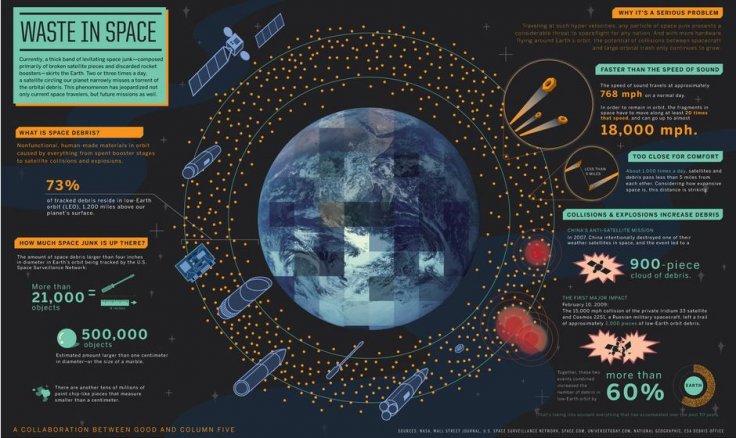A rocket used by NASA in a recent launch had fallen back to Earth. Based on the size of the rocket, it is regarded as one of the largest pieces of space junk to crash uncontrollably to Earth.
The rocket that recently fell to Earth was identified as the Long March 5B. It was launched by China on May 5 from the Wenchang Space Launch Center in Hainan province to send an unmanned prototype spacecraft into Earth's orbit.

China's Long March 5B Rocket
The launch was a success and the rocket was able to properly deliver its payload. Unfortunately, days after the launch, the rocket's empty core stage fell back on Earth in an uncontrolled descent.
Weighing at almost 18 tons, it is regarded as the biggest piece of junk from space to fall back on Earth in an uncontrolled manner since 1991 and the fourth biggest overall. It falls behind the Salyut 7 in 1991, the Skylab rocket stage in 1975 and the Skylab in 1975.
Threat Posed By Massive Space Debris
According to astronomer Jonathan McDowell from the Harvard-Smithsonian Center for Astrophysics, the Long March 5B rocket was large enough to produce dense pieces that could survive re-entry through Earth's atmosphere. Depending on their size and re-entry speed, some of these pieces could take out houses.
"For a large object like this, dense pieces like parts of the rocket engines could survive re-entry and crash to Earth," McDowell told CNN. "Once they reach the lower atmosphere they are traveling relatively slowly, so worst case is they could take out a house."

Tracking Long March 5B's Descent
Fortunately, the rocket and its fragments safely crashed into the Atlantic Ocean. Before splashing down, the massive space junk flew over Los Angeles and New York. Its descent was confirmed by the US Air Force's 18th Space Control Squadron.
According to the military branch, the rocket stage crashed into the ocean on May 11 at 8:33 am PDT or 11:33 am ET. Although the rocket safely crashed back to Earth, McDowell noted that its uncontrolled re-entry made it hard to predict where and when the large piece of space debris would hit.
"The problem is that it is traveling very fast horizontally through the atmosphere and it's hard to predict when it will finally come down," he explained. "The Air Force's final prediction was plus or minus half an hour, during which time it went 3/4 of the way around the world. It's pretty hard to do any better."









